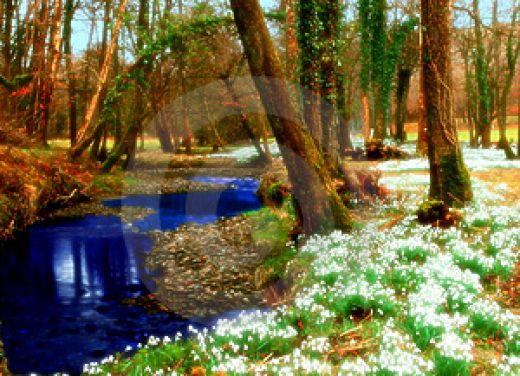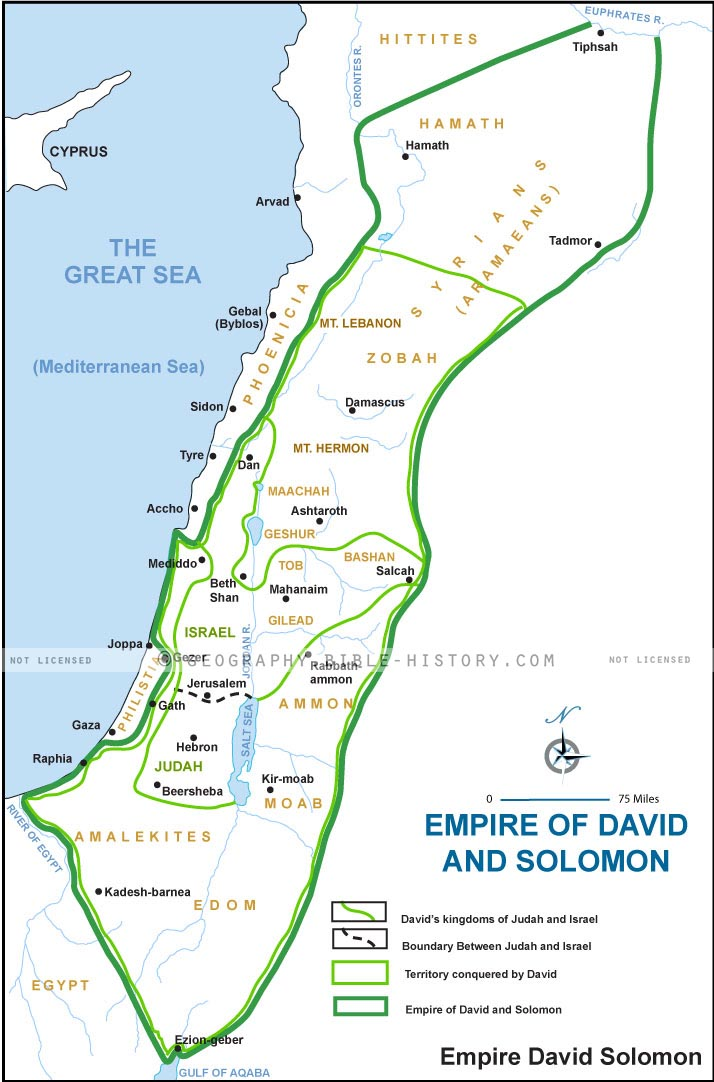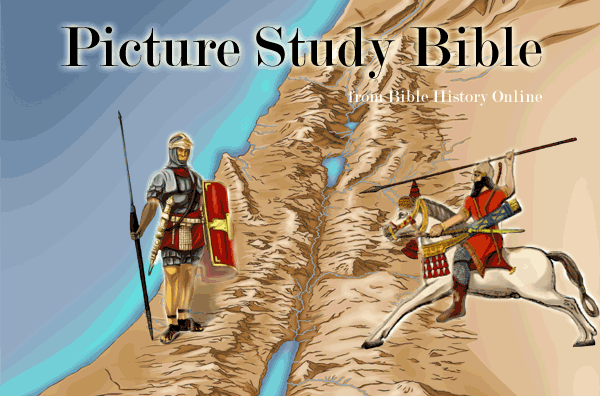Song of Solomon 1:5 I am black, but comely, O ye daughters of Jerusalem, as the tents of Kedar, as the curtains of Solomon. - Free Bible Online
Song of Solomon 1:5 "I am black but lovely, O daughters of Jerusalem, Like the tents of Kedar, Like the curtains of Solomon.
5. black--namely, "as the tents of Kedar," equivalent to blackness
(Ps 120:5).
She draws the image from the black goatskins with which the Scenite
Arabs ("Kedar" was in Arabia-Petræa) cover their tents
(contrasted with the splendid state tent in which the King was
awaiting His bride according to Eastern custom); typifying the darkness
of man's natural state. To feel this, and yet also feel one's self in
JesusChrist "comely as the curtains of Solomon," marks the believer
(Ro 7:18,
&c.; 8:1);
1Ti 1:15,
"I am chief"; so she says not merely, "I was," but "I am";
still black in herself, but comely through His comeliness
put upon her
(Eze 16:14).
curtains--first, the hangings and veil in the temple of Solomon
(Eze 16:10);
then, also, the "fine linen which is the righteousness of saints"
(Re 19:8),
the white weddinggarment provided by Jesus Christ
(Isa 61:10;
Mt 22:11;
1Co 1:30;
Col 1:28; 2:10;
Re 7:14).
Historically, the dark tents of Kedar represent the Gentile
Church
(Isa 60:3-7,
&c.). As the vineyard at the close is transferred from the Jews, who
had not kept their own, to the Gentiles, so the Gentiles are introduced
at the commencement of the Song; for they were among the earliest
enquirers after Jesus Christ
(Mt 2:1-12):
the wise men from the East (Arabia, or Kedar).
daughters of Jerusalem--professors, not the bride, or "the virgins,"
yet not enemies; invited to gospel blessings
(So 3:10, 11);
so near to Jesus Christ as not to be unlikely to find Him
(So 5:8);
desirous to seek Him with her
(So 6:1;
compare
So 6:13; 7:1, 5, 8).
In
So 7:8, 9,
the bride's Beloved becomes their Beloved; not, however, of
all of them
(So 8:4;
compare
Lu 23:27, 28).
JFB.
Questions Related to this Verse
Select a Chapter
-
Song of Solomon 1 |
Song of Solomon 2 |
Song of Solomon 3 |
Song of Solomon 4 |
Song of Solomon 5 |
Song of Solomon 6 |
Song of Solomon 7 |
Song of Solomon 8 |
Select a Book of the Bible
-
Genesis |
Exodus |
Leviticus |
Numbers |
Deuteronomy |
Joshua |
Judges |
Ruth |
1 Samuel |
2 Samuel |
1 Kings |
2 Kings |
1 Chronicles |
2 Chronicles |
Ezra |
Nehemiah |
Esther |
Job |
Psalms |
Proverbs |
Ecclesiastes |
Song of Solomon |
Isaiah |
Jeremiah |
Lamentations |
Ezekiel |
Daniel |
Hosea |
Joel |
Amos |
Obadiah |
Jonah |
Micah |
Nahum |
Habakkuk |
Zephaniah |
Haggai |
Zechariah |
Malachi |
Matthew |
Mark |
Luke |
John |
Acts |
Romans |
1 Corinthians |
2 Corinthians |
Galatians |
Ephesians |
Philippians |
Colossians |
1 Thessalonians |
2 Thessalonians |
1 Timothy |
2 Timothy |
Titus |
Philemon |
Hebrews |
James |
1 Peter |
2 Peter |
1 John |
2 John |
3 John |
Jude |
Revelation |
The Book of the Song of Solomon
Song of Solomon 1:2-4 - Let him kiss me with the kisses of his mouth: for thy love [is] better than wine. Because of the savour of thy good ointments thy name [is as] ointment poured forth, therefore do the virgins love thee. Draw me, we will run after thee: the king hath brought me into his chambers: we will be glad and rejoice in thee, we will remember thy love more than wine: the upright love thee.
Song of Solomon 7:6-10 - How fair and how pleasant art thou, O love, for delights! This thy stature is like to a palm tree, and thy breasts to clusters [of grapes]. I said, I will go up to the palm tree, I will take hold of the boughs thereof: now also thy breasts shall be as clusters of the vine, and the smell of thy nose like apples; And the roof of thy mouth like the best wine for my beloved, that goeth [down] sweetly, causing the lips of those that are asleep to speak. I [am] my beloved's, and his desire [is] toward me.
The Old Testament - A Brief Overview
Bible Survey - Song of Solomon
Hebrew Name - Shiyr Hashirim "Song of songs"
Greek Name - Asma Asmaton (Greek form of the Hebrew)
Author - Solomon (According to Tradition)
Date - 1014 BC Approximately
Theme - The beauty of love
Types and Shadows - In Song of Solomon Jesus is the husband who loves His bride.

Peaceful Brook with still waters
The first verse of the Book of the Song of Solomon mentions King Solomon as its author, and this is why it is often called the Song of Solomon. It is also referred to as Canticles (Latin) or the Song of Songs (Hebrew) because it is considered the finest of all songs. It is clear that this poem is a wedding song and it reveals the glories of love. It exalts physical love, erotic love, and everything about love. The time is springtime and two lovers are full of passion and delight. The words in the poem are very descriptive and romantic. When their love is finally consummated the bond is so durable that nothing can destroy it. The poem is clearly describing God's love for his people, he is the bridegroom and his people are his bride. He is deeply in love with them and ultimately there will be a wedding day, and how excited they both are for that day.
Over time it has been difficult for anyone to give a clear interpretation to the Book of the Song of Solomon. there are three primary interpretations that have been accepted. 1 � A literal interpretation, which treats this poem as a historical factual event. There were two actual lovers who were unselfishly devoted to one another and they were finally married. 2 � an allegorical interpretation, which treats this poem as an allegory, for God loves his people, Christ loves his bride, and his bride loves Him. 3 � The final interpretation is that Solomon was a type of God who is deeply in love with his bride who is a type of the church. The wedding is a type of a future wedding that will exist between Christ and his bride the church.
There is no way to know the exact historical circumstances behind this event. We know it was Solomon because it mentions him by name, but it is uncertain whether he married a Shulamite woman of Israel, or Pharaoh's daughter. Others have included a third person, a shepherd who the girl of Shulam is in love with despite the kings desire for her. This book was included in the Septuagint (Greek translation of the Hebrew Canon) and was known in the time of Jesus as part of the Hebrew Scriptures though some critics doubt it should be in the Bible. The Song of Solomon was so important to the Jews that one of the most famous rabbi's in history, Rabbi Aqiba (90-135 AD) said that "the entire world, from the beginning until now, does not outweigh the day in which Shiyr Hashirim (Song of Songs) was given to Israel."
Outline of the Book of the Song of Solomon
Song of Solomon 1:1-2:7 - The bride expresses her deep desire to be with her lover and sings praises about him.
Song of Solomon 2:8-3:5 - The affections between the bride and her lover becomes more intimate, and she pours out more praise on the one she loves was very elaborate and exquisite analogies from nature.
Song of Solomon 3:6-5:1 - King Solomon gives his praise, as does the bride, and the engagement takes place.
Song of Solomon 5:2-6:9 - The bridegroom goes away for a period of time, and during his absence the bride longs for his return and continues to give him praises.
Song of Solomon 6:10-8:4 - This section contains some very descriptive verses describing the beauty of the bride.
Song of Solomon 8:5-14 - The conclusion deals with the durable eternal bond of consummated love.
Quick Reference Map

Map of the Empires of David and Solomon (Click to
Enlarge)
Quick Reference Maps - Song of Solomon
The Kingdom of Solomon at the time of the Song of Solomon
The Empire of David and Solomon during the Chronicles
Song of Solomon Resources
More About the Book of
Song of Solomon
Song
of Solomon in the Picture
Study Bible
Timeline of the Ancient
World
Back to the Old Testament
Back to Bible
History Online
Bibliography Information
Free Bible Online Picture Study Bible, King James Version. New York: American Bible Society: www.free-bible.com, 1995-2013. Bible History Picture Study Bible. May 09, 2024.
- King James Bible Home
- Free Bible Home Page
- Bible Encyclopedia (ISBE)
- Online Bible (KJV)
- Naves Topical Bible
- Smith's Bible Dictionary
- Easton's Bible Dictionary
- Fausset's Bible Dictionary
- Matthew Henry Bible Commentary
- Hitchcock's Bible Dictionary
Read The Bible
- 1599 Geneva Bible (GNV)
- 21st Century King James Version (KJ21)
- American Standard Version (ASV)
- Amplified Bible (AMP)
- Amplified Bible, Classic Edition (AMPC)
- Authorized (King James) Version (AKJV)
- BRG Bible (BRG)
- Christian Standard Bible (CSB)
- Common English Bible (CEB)
- Complete Jewish Bible (CJB)
- Contemporary English Version (CEV)
- Darby Translation (DARBY)
- Disciples’ Literal New Testament (DLNT)
- Douay-Rheims 1899 American Edition (DRA)
- Easy-to-Read Version (ERV)
- English Standard Version (ESV)
- English Standard Version Anglicised (ESVUK)
- Evangelical Heritage Version (EHV)
- Expanded Bible (EXB)
- GOD’S WORD Translation (GW)
- Good News Translation (GNT)
- Holman Christian Standard Bible (HCSB)
- International Children’s Bible (ICB)
- International Standard Version (ISV)
- J.B. Phillips New Testament (PHILLIPS)
- Jubilee Bible 2000 (JUB)
- King James Version (KJV)
- Lexham English Bible (LEB)
- Living Bible (TLB)
- Modern English Version (MEV)
- Mounce Reverse Interlinear New Testament (MOUNCE)
- Names of God Bible (NOG)
- New American Bible (Revised Edition) (NABRE)
- New American Standard Bible (NASB)
- New American Standard Bible 1995 (NASB1995)
- New Catholic Bible (NCB)
- New Century Version (NCV)
- New English Translation (NET)
- New International Reader's Version (NIRV)
- New International Version - UK (NIVUK)
- New International Version (NIV)
- New King James Version (NKJV)
- New Life Version (NLV)
- New Living Translation (NLT)
- New Matthew Bible (NMB)
- New Revised Standard Version (NRSV)
- New Revised Standard Version Catholic Edition (NRSVCE)
- New Revised Standard Version, Anglicised (NRSVA)
- New Revised Standard Version, Anglicised Catholic Edition (NRSVACE)
- New Testament for Everyone (NTE)
- Orthodox Jewish Bible (OJB)
- Revised Geneva Translation (RGT)
- Revised Standard Version (RSV)
- Revised Standard Version Catholic Edition (RSVCE)
- The Message (MSG)
- The Voice (VOICE)
- Tree of Life Version (TLV)
- World English Bible (WEB)
- Worldwide English (New Testament) (WE)
- Wycliffe Bible (WYC)
- Young's Literal Translation (YLT)
Table of Contents
Main Menu
- Ancient Assyrian Social Structure
- Ancient Babylonia
- Ancient Canaan During the Time of Joshua
- Ancient History Timeline
- Ancient Oil Lamps
- Antonia Fortress
- Archaeology of Ancient Assyria
- Assyria and Bible Prophecy
- Augustus Caesar
- Background Bible Study
- Bible
- Biblical Geography
- Fallen Empires - Archaeological Discoveries and the Bible
- First Century Jerusalem
- Glossary of Latin Words
- Herod Agrippa I
- Herod Antipas
- Herod the Great
- Herod's Temple
- High Priest's in New Testament Times
- Jewish Literature in New Testament Times
- Library collection
- Map of David's Kingdom
- Map of the Divided Kingdom - Israel and Judah
- Map of the Ministry of Jesus
- Matthew Henry Bible Commentary
- Messianic Prophecy
- Nero Caesar Emperor
- Online Bible Maps
- Paul's First Missionary Journey
- Paul's Second Missionary Journey
- Paul's Third Missionary Journey
- Pontius Pilate
- Questions About the Ancient World
- Tabernacle of Ancient Israel
- Tax Collectors in New Testament Times
- The Babylonian Captivity
- The Black Obelisk of Shalmaneser
- The Books of the New Testament
- The Court of the Gentiles
- The Court of the Women in the Temple
- The Destruction of Israel
- The Fall of Judah with Map
- The History Of Rome
- The Incredible Bible
- The Jewish Calendar in Ancient Hebrew History
- The Life of Jesus in Chronological Order
- The Life of Jesus in Harmony
- The Names of God
- The New Testament
- The Old Testament
- The Passion of the Christ
- The Pharisees
- The Sacred Year of Israel in New Testament Times
- The Samaritans
- The Scribes
Ancient Questions
- How did the ancient Greeks and Romans practice medicine and treat illnesses?
- What were the major contributions of ancient Babylon to mathematics and astronomy?
- How did the ancient Persians create and administer their vast empire?
- What were the cultural and artistic achievements of ancient India, particularly during the Gupta Empire?
- How did ancient civilizations like the Incas and Aztecs build their remarkable cities and structures?
- What were the major trade routes and trading practices of the ancient world?
- What was the role of slavery in ancient societies like Rome and Greece?
- How did the ancient Mayans develop their sophisticated calendar system?
- What were the key events and significance of the Battle of Thermopylae in ancient Greece?
- What was life like for women in ancient Rome?
Bible Study Questions
- What does biblical archaeologist said about hieroglyphics?
- Where is the Negev where Abram went to in Genesis?
- What is the name of Ramallah in the Bible?
- How do we approach and study the historical and cultural context of biblical passages?
- What is the significance of the Psalms in personal and corporate worship?
- How do we discern and apply biblical principles to contemporary ethical issues?
- What is the biblical perspective on the nature of God's love and mercy?
- How do we interpret and understand apocalyptic literature in the Bible?
- What are the different covenants in the Bible and their significance?
- How do we grow in spiritual maturity and develop a deeper understanding of the Word?
About
Welcome to Free Bible: Unearthing the Past, Illuminating the Present! Step into a world where ancient history and biblical narratives intertwine, inviting you to explore the rich tapestry of human civilization.
Discover the captivating stories of forgotten empires, delve into the customs and cultures of our ancestors, and witness the remarkable findings unearthed by dedicated archaeologists.
Immerse yourself in a treasure trove of knowledge, where the past comes alive and illuminates our understanding of the present.
Join us on this extraordinary journey through time, where curiosity is rewarded and ancient mysteries await your exploration.
Recent posts
-

Personalized Baby Bibs for every Little
Every little one deserves to feel cherished and celebrated from the very start. These custom baby bibs, lovingly personalized with care, make the perf... -

The Art of Custom Home Design: Unveiling Wellcore Corporation's Expertise
In the ever-evolving panorama of contemporary production, customization reigns ultimate as a testament to innovation and the preference for a without ... -

Birthstones: A Sparkling Symphony of History, Symbolism, and Self-Expression
Birthstones, the ones fascinating gems linked to our delivery month, boast a records as rich and multifaceted because the jewels themselves. Their tal... -

The use of medicinal mushrooms by different religions of the world.
The integration of medicinal mushrooms into various religious practices around the world is a fascinating testament to their revered status across cul... -

Explore a Collection of Religious SVGs
Religious SVGs are versatile design elements that can be used to create a variety of personalized and meaningful projects. Whether you're looking to e...
